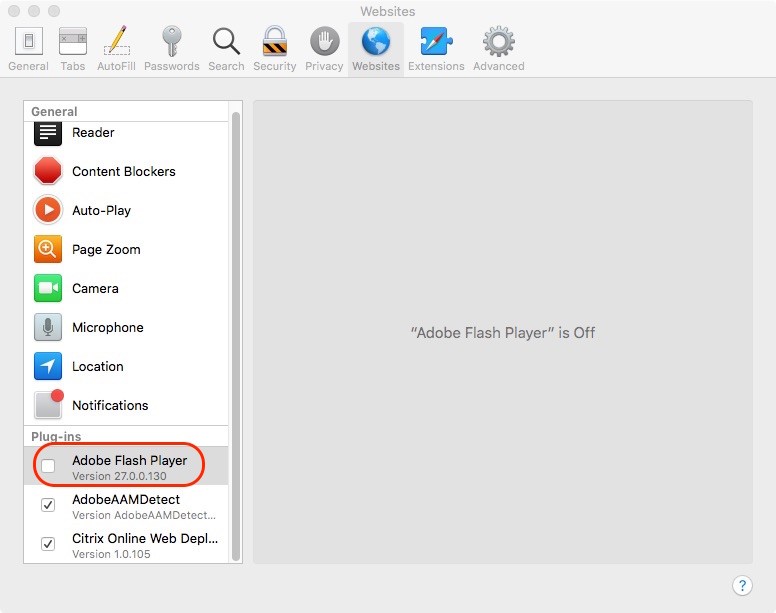Install Flash Player For Safari Mac
Export outlook contacts from mac to pc. Adobe Flash Player 31 (Win, Mac & Linux) debugger (aka debug player or content debuggers) and standalone (aka projectors) players for Flex and Flash developers. – Updated debugger and standalone versions of Flash Player. These versions contain fixes for critical vulnerabilities identified in.
The latest versions are 31.0.0.153 (Win, Mac & Linux). All users are encouraged to update to these latest versions. Windows • • • • • • • Note: Release builds of Flash Player for Windows 8.1 are a part of the Windows 8.1 update Note: Users of Windows 8.0 should upgrade to Windows 8.1 or Windows 10 Uninstalling the Windows 8.1/8.1 ActiveX debuger: please note the KB number in the installer filename after downloading the installer file. To uninstall the debugger, go to Control Panel > Programs > Programs and Features > Installed Updates. Look for the entry with the KB number the same as in the installer file and uninstall that update. Macintosh • • • • Linux • • • • • Note: Flash CS4 users must rename and save flashplayer_11_sa_debug.exe and flashplayer_10_sa_debug.app.zip to Players/Debug/FlashPlayer.exe and Players/Debug/Flash Player.app in order to debug ActionScript 3.0 projects.
PlayerGlobal (.swc) • MACROMEDIA FLASH LOCAL CONTENT UPDATER The Local Content Updater (LCU) is a free command-line utility that can add, remove, or check for local-with-networking privileges, operating on one or many SWFs. This tool allows you to change the security sandbox that the SWF file operates in when it is played as a local file in Flash Player 8 and above. • • • C++ source code for the Local Content Updater is also available. Download the source code if you wish to see how the Local Content Updater works, port it to another platform, investigate bugs, integrate it into scripts, etc. • • If you have suggestions, bug reports, or contributions regarding the Local Content Updater, send email to. Please note that this email address is only for issues regarding the Local Content Updater itself, and not for general issues regarding security in the Flash Player. ADOBE FLASH PLAYER UNINSTALLER The Adobe Flash Player Uninstaller is a valuable tool for troubleshooting and testing detection schemes. The most current uninstallers and instructions for use can be found in this.
Download Flash Player For Safari Mac
Adobe® Flash® Player is a lightweight browser plug-in and rich Internet application runtime that delivers consistent and engaging user experiences, stunning audio/video playback, and exciting gameplay. Installed on more than 1.3 billion systems, Flash Player is the standard for delivering high. Flash Player is a free browser plug-in that is used across the BBC website for playing videos, animations and games. Find out here how to install the Flash Player plug-in on Safari for Mac.
Did the installer start installing? You don’t know where the Flash Player installer has been downloaded.
Adobe Flash Player Safari Mac
By default, the files are downloaded and saved to the Downloads folder unless the 'save to' location is changed manually. • After downloading Flash Player, close all browsers.

• Locate the Flash Player install file. Unless you have specified otherwise, the file is saved in your Downloads folder. • Double-click the installer file to begin the Flash Player installation. Choose Window > Downloads or press Option+Command+L. Control-click the downloaded file and choose Show in Finder.
While sites and services continually adopt newer technologies such as HTML5 in the place of Flash and other older plug-ins, in your internet activity you'll likely find that Flash is still a major component of a number of sites. Some browsers still treat these plug-ins the same as they always have, but Safari has a different way of interacting with Flash than it has in the past. For one thing, Flash is off by default. How Flash works in Safari on macOS High Sierra Since macOS Sierra, Adobe's Flash plug-in has been turned off in Safari by default to encourage users — and websites — to use HTML5 for features like video, and this remains true in macOS. This is because Flash is easily exploitable, and if someone with nefarious intentions hacks the plug-in or the site, Apple previously couldn't prevent users from being exposed. However, there are some sites and services, such as Hulu, Spotify, and Pandora, that require the use of Flash for video playback, music streaming, and more. When you visit one of these sites in Safari, by default you'll see either a black screen with a button saying Click to use Flash or the website will encourage you to download Flash.